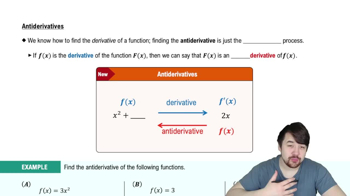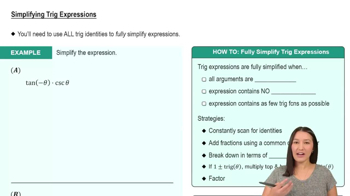Evaluate the definite integral using the appropriate substitutions.
 Verified step by step guidance
Verified step by step guidance Verified video answer for a similar problem:
Verified video answer for a similar problem:



 4:51m
4:51mMaster Integrals Resulting in Inverse Trig Functions with a bite sized video explanation from Patrick
Start learning